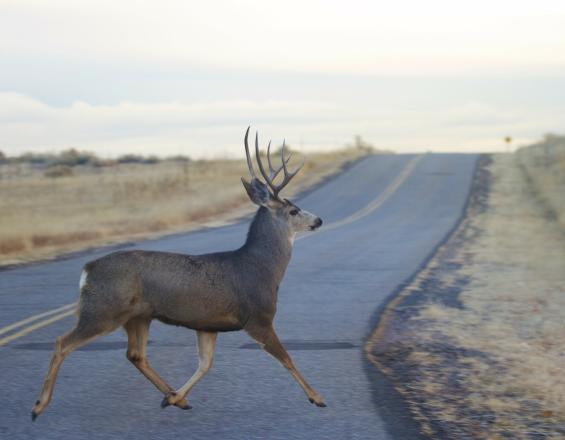Préserver la migration à longue distance du cerf mulet

Le cerf mulet est une espèce migratrice emblématique de l'ouest des États-Unis. Alors que les influences anthropiques augmentent et que les ongulés migrateurs continuent de décliner dans le monde entier, il convient de mettre l'accent sur la protection des voies de migration.
Les cerfs mulets traversent le Wyoming pour rejoindre 5 000 autres cerfs mulets pour l'hiver, où ils poursuivent leur migration vers le nord. Un point d'étranglement connu sous le nom de "goulot d'étranglement" du lac Fremont constituait une menace sérieuse pour la voie de migration ; les cerfs se pressent dans une zone de 400 mètres de large deux fois par an. La voie de migration à travers le goulot d'étranglement était bloquée par une clôture en fil de fer tissé de 2,5 m de haut. La zone a été identifiée comme une zone importante pour la migration et a été achetée par un organisme national à but non lucratif, le Conservation Fund. Le terrain a été transféré au Wyoming Game and Fish Department et désigné comme Luke Lynch Wildlife Habitat Management Area (zone de gestion de l'habitat de la faune sauvage) afin d'empêcher l'obstruction du couloir de migration.
Impacts
Lorsqu'il a été désigné comme zone de gestion de l'habitat, le goulet d'étranglement a été protégé de tout développement humain. Les projets de construction de chalets au bord du lac ont été bloqués et empêchent tout développement futur. La clôture métallique de 2,5 m a été redirigée autour de la voie de migration pour permettre aux 4 000 à 5 000 cerfs mulets de traverser le goulet d'étranglement. Cette zone de migration clé conservera sa fonction de corridor pour la migration des cerfs mulets et maintiendra la connectivité des aires de répartition des cerfs mulets.
Cette espèce emblématique et l'ensemble de la faune bénéficieront de ce corridor, de même que les personnes qui dépendent de l'écosystème pour leur subsistance et leurs loisirs.



